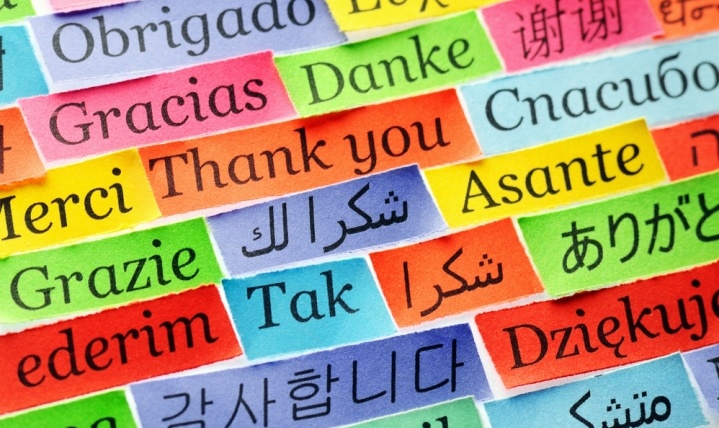Introduction to Taiwanese Hokkien
What’s your first reaction when you hear about Taiwanese Hokkien? You might think it’s a dialect of Chinese with the expectation that you are able to understand some of it if you speak Mandarin. However, with the historical events that happened over time since the language first got spread to Taiwan in the 17th century, Taiwanese Hokkien spoken in Taiwan today is different from and is not comprehensible with Mandarin or other Chinese dialects.
Though a lot of vocabulary and grammar in Hokkien came from Mandarin, Taiwanese Hokkien uses a combination of Traditional Mandarin characters and dialect characters, while the old Hokkien completely wrote with Traditional Mandarin characters. Thus, it can sometimes be difficult for a native Mandarin speaker to understand Taiwanese Hokkien characters.
| TAIWANESE HOKKIEN | MANDARIN | ENGLISH |
| 佮意 (kah-ì) | 喜歡 (xǐhuan) | To like |
| 歹勢 (pháinn-sè) | 不好意思 (bùhǎoyìsi) | Excuse me |
| 佗位 (tó-uī) | 哪裡 (nǎlǐ) | Where |
| 四序 (sù-sī) | 舒適 (shūshì) | Comfortable |
| 定定 (tiānn-tiānn) | 常常 (chángcháng) | A lot (frequency) |
Hokkien originated in Quanzhou, the southern area of Fujian, once an important centre for trade and migration, and has since become one of the most widely used Chinese dialects abroad. It once served as the ligua franca among overseas Chinese communities in Southeast Asia. During the rule of Qing dynasty, thousands of emigrants from Fujian arrived annually, thus it made Taiwan the major place of Hokkien dialects outside of Fujian. Taiwanese Hokkien is a combination of Quanzhou and Zhangzhou dialects and with some Amoy (Xiamen dialect) influences.
Taiwanese Hokkien, which is commonly known as Taiwanese or Tâi-gí, is one of the Southern Min dialects. It is spoken by the Taiwanese Hoklo, who immigrated to Taiwan from southern Fujian during the Qing dynasty. Today, 70% of Taiwanese population is made up of the Hoklo people. Taiwanese Hokkien in northern Taiwan tends to be based on Quanzhou dialect, while Zhangzhou dialect has more influences to Taiwanese Hokkien in southern Taiwan (As shown on the map below). Taiwanese Hokkien once was the dominant language of Taiwan. It even was the official language at the time of the Kingdom of Tungnin founded by Koxinga. Speakers of it far outnumbered those of Hakka and Formosan languages until China’s defeat to Japan in 1895 after the First Sino-Japanese War. Because of this, Taiwanese Hokkien also carries many Japanese loanwords.

Japanese Loanwords in Taiwanese Hokkien
| JAPANESE | TAIWANESE HOKKIEN | ENGLISH |
| 便所benjo | 便所piān-sóo | bathroom |
| 味の素ajinomoto | 味精bī-sòo | MSG |
| 野球yakyū | 野球iá-kiû | baseball |
| 出張shutchō | 出張tshut-tiunn | travel on business |
| 電気屋denkiya | 電器行tiān-khì-hâng | appliance shop |
| 注射chūsha | 注射tsù-siā | injection |
| 利潤rijun | 利潤lī-sûn | profit, interest |
| 弁当bentō | 便當piān-tong | bento |
| 病院byōin | 病院pēnn-īnn | hospital |
| 離緣rien | 離緣lī-iân | divorce |
Other Southern Min Dialects
Minnan Proper (Quanzhang)
- It is commonly known as Hokkien
- Location: Xiamen, Southern Fujian, Taiwan and Southeast Asia
- It is the most common form of Southern Min dialect
- Two types of Standard Minnan:
- Traditional Standard Minnan: It’s based on the dialect spoken in Quanzhou.
- Modern Standard Minnan: It’s based on the Amoy dialect spoken in Xiamen and the Taiwanese dialect (These two dialects are a combination of Quanzhou and Zhangzhou dialects).
- Today, the majority of the Minnan language books and dictionaries are based on the pronunciation of the Modern Standard Minnan.
Teo-Swa
- It is also known as Chaoshan speech.
- Location: Chaoshan region of eastern Guangdong
- Teochew shares some cognates, follows the same grammar patterns and has a highly similar phonology with Minnan Proper.
- It has limited mutual intelligibility with Minnan Proper due to the significantly different pronunciation and vocabulary.
- It keeps numerous Old Chinese pronunciations and vocabulary that have been lost in some of the other modern varieties of Chinese. Thus, many linguists see Teochew as one of the most conservative Chinese dialects.
Qiong-Lei
- Location: Leizhou peninsula in the west of Guangdong province and southern Chinese island province of Hainan
- It shares linguistic roots with Minnan Proper.
- It has lost much of its mutual intelligibility with Minnan Proper and Teochew.
- It developed into a distinctive language of its own because Qiong-Lei is spoken relatively far away from the Southern Min region.

Hokkien Spoken in Southeast Asia
Singaporean Hokkien
- Location: Singapore
- It holds Amoy as its standard with the accent based on a combination of Quanzhou and Zhangzhou speeches.
- Singaporean Hokkien is also influenced by many other languages and dialects spoken in Singapore. It carries many loanwords from Malay and English.
- A Singaporean would most likely have no problem communicating with Taiwanese speakers in Singaporean Hokkien.
Penang Hokkien
- Location: States of Penang, Kedah, Perlis and Perak in Malaysia
- It is a subdialect of Zhangzhou speech with a wide range of borrowed words from Malay and English.
- It is primarily a spoken dialect; thus, it is rarely written in Chinese characters. There is also no standard romanization.
- It has limited mutual intelligibility with Riau Hokkien and Taiwanese Hokkien.
Riau Hokkien
- It’s also known as Southern Malaysia Hokkien.
- Location: Central & Southern Peninsular Malaysia, Sarawak, Singapore, and Riau in Indonesia
- Riau Hokkien is based on the Quanzhou dialect, which means it’s different from Penang Hokkien
- It is influenced by numerous languages and dialects spoken in Malaysia as well as influence from Teochew dialect. It also has many loanwords from Malay and English.
Reasons To Learn Taiwanese Hokkien
There were a few time periods when Taiwanese Hokkien was only allowed to be spoken in a familial setting, which gives people a more intimate and familiar feeling when they hear Taiwanese Hokkien. Because of this, Taiwanese people tend to let their guard down and open up a lot more when you speak the language. Thus, it will give you insights into a more localized and traditional Taiwan. It can even lead to more meaningful exchanges sometimes.
Taiwan’s rich history has made the island a cultural melting pot. There are many layers of the island out there that many people might not even know existed. With the knowledge of Taiwanese Hokkien, you will discover another side of Taiwan that is conducted entirely in Taiwanese Hokkien. Moreover, it can help you understand more of what is going around you and be closer to the local community and culture.
Much of the local business is still conducted mainly in Taiwanese Hokkien, especially in the east coast and southern parts. A lot of the shop owners and taxi drivers are actually more proficient in Taiwanese Hokkien than Mandarin. If you speak Taiwanese Hokkien, not only is it more likely for you to bargain and score yourself a good deal but also easier for you to get around, sometimes you might even get some free goodies from the vendors.
20 Basic Phrases in Taiwanese Hokkien
| TAIWANESE HOKKIEN | TAILO | ENGLISH |
| 你好。 | Líhó. | Hi |
| 你好無? | Líhóbô? | How are you? |
| 多謝 | To-siā. | Thank you. |
| 今仔日拜幾? | Kin-á-ji̍tpàikuí? | What day is it today? |
| 你叫啥物名? | Líkiòsiánn-mi̍hmiâ? | What’s your name? |
| 我叫 _____。 | Guákiò_____. | My name is _____. |
| 幾點矣? | Kuí-tiám ah? | What time is it? |
| 你幾歲? | Líkuí-huè? | How old are you? |
| 歹勢 | Pháinn-sè | Excuse me |
| 小心 | Sió-sim | Be careful! |
| 請共我鬥相共。 | Tshiánnkāguátàu-sann-kāng. | Please help me! |
| 我感冒。 | Guákám-mōo | I am sick. |
| 今仔日天氣袂䆀。 | Kin-á-ji̍tthinn-khìbē-bái. | The weather’s nice today. |
| 你對佗位來? | Lítuìtó-uīlâi? | Where are you from? |
| 我對_____來。 | Guátuì _____ lâi. | I am from _____. |
| 你食啥物頭路? | Lítsia̍hsiánn-mi̍hthâu-lōo? | What’s your job? |
| 今仔日真熱。 | Kin-á-ji̍ttsin-jua̍h. | It’s hot today. |
| 你感覺猶好無? | Líkám-kakiáu-hóbô? | Are you feeling okay? |
| 我真悿。 | Guátsin-thiám. | I’m tired. |
| 敢是咧落雨? | Kám-sīlehlo̍h-hōo? | Is it raining? |
| 再會 | Tsài-huē | Goodbye |
Has your opinion of Taiwanese Hokkien changed after seeing the phrases above? Taiwanese Hokkien can be easy and fun to learn, and the rewards you get are much deeper and much more than just being able to speak a language.



